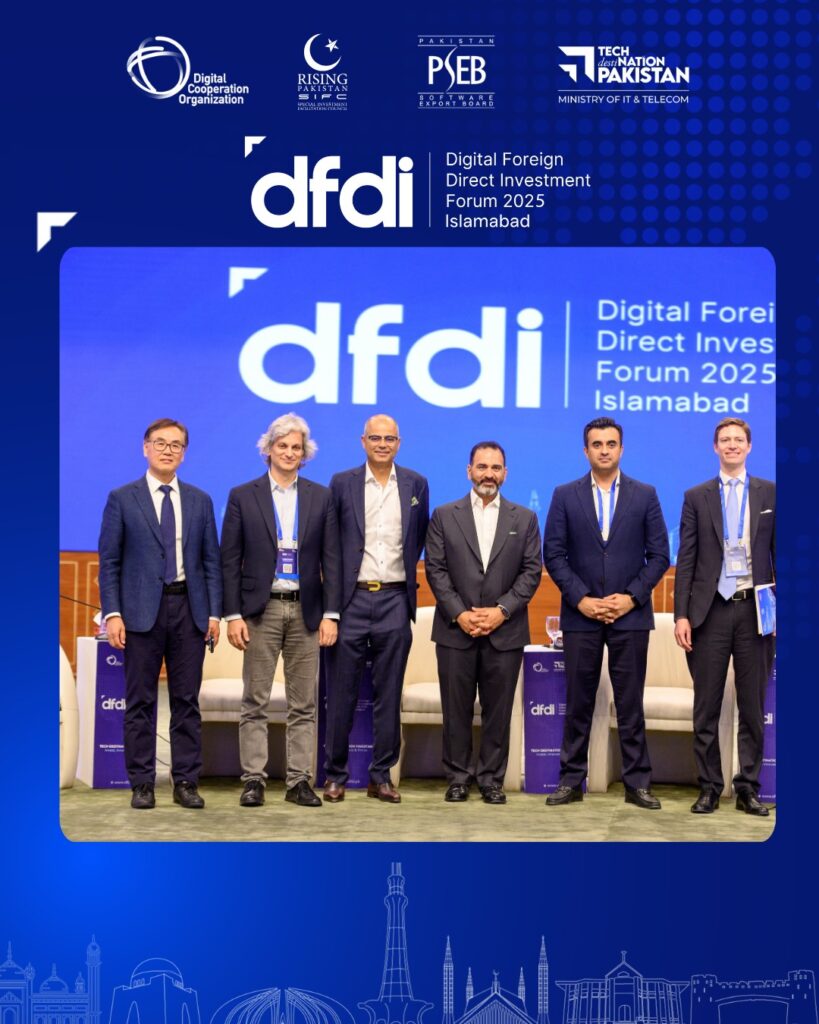Table of Contents
Understanding the DFDI Business Model
The DFDI business model—Domestic and Foreign Direct Investment—represents a strategic approach where businesses seek capital and resources both domestically and internationally to fuel growth and expansion. By integrating investments from various sources, companies can diversify their funding, access new markets, and enhance operational efficiency.
What is the DFDI Business Model?
The DFDI business model combines domestic investments with foreign direct investments to create a robust financial foundation. This hybrid approach allows businesses to:
- Diversify Funding Sources: Mitigate risks by not relying solely on one investment stream.
- Access New Markets: Utilize foreign investments to enter and establish a presence in international markets.
- Enhance Operational Capabilities: Leverage domestic resources for stability and foreign resources for innovation and expansion.

Key Components of the DFDI Business Model
1. Investment Diversification
A core aspect of the DFDI business model is the diversification of investment sources. By attracting both domestic and foreign investors, businesses can:
- Reduce Financial Risk: A diverse investment portfolio can cushion against market volatility.
- Increase Capital Availability: More investment avenues mean more funds for expansion and innovation.
2. Strategic Partnerships
Forming alliances with both local and international partners is vital. These partnerships can:
- Facilitate Market Entry: Local partners can provide insights into domestic markets, while international partners can assist in global expansion.
- Share Resources and Expertise: Collaborations can lead to shared technologies, knowledge, and infrastructure.
3. Regulatory Compliance
Operating under the DFDI business model requires adherence to various regulations:
- Domestic Laws: Understanding and complying with local business laws and investment regulations.
- International Standards: Ensuring operations meet international trade and investment standards.
🌟 Benefits of Implementing the DFDI Business Model
Implementing the DFDI business model offers a multitude of benefits for businesses seeking long-term stability, innovation, and global competitiveness. By combining both domestic and foreign direct investments, companies gain access to a powerful hybrid approach that strengthens financial structures and expands operational capacity. Let’s explore the major benefits in detail:
✅ 1. Increased Capital Availability
The DFDI business model ensures that companies are not limited to one investment source. By drawing from both domestic and foreign investors:
- Businesses gain access to larger pools of funds.
- Financing options are diversified, reducing overreliance on banks or government grants.
- Capital is available for R&D, expansion, and infrastructure development.
✅ 2. Risk Mitigation Through Diversified Investments
A major benefit of the DFDI business model is risk reduction:
- Relying on both domestic and foreign funding cushions against market volatility in any one region.
- Political instability, currency fluctuations, or policy changes in one country can be offset by investments from another.
- Economic downturns in a local market can be balanced by growth in foreign markets.
✅ 3. Access to Global Markets
Foreign investments often come with strategic international connections. Through the DFDI business model, companies can:
- Expand their operations across borders.
- Build brand awareness in international markets.
- Leverage foreign partners’ distribution and logistics networks.
This expansion increases revenue potential and builds brand credibility globally.
✅ 4. Enhanced Technological Advancement
International investors, especially from developed economies, often bring:
- Advanced technologies
- Innovative processes
- Digital infrastructure
The DFDI business model allows businesses to adopt these advancements, improving productivity, reducing costs, and enhancing product or service quality.
✅ 5. Strengthened Domestic Operations
While foreign investments bring innovation, domestic investments provide operational stability and market knowledge. The synergy created by the DFDI business model ensures:
- Stronger ties to the local economy
- Better customer understanding
- Compliance with local regulations and policies
✅ 6. Improved Employment Opportunities
The implementation of the DFDI business model leads to:
- Job creation at both domestic and international levels
- Upskilling of local labor forces through exposure to global practices
- More inclusive workforce development, contributing to socio-economic upliftment
✅ 7. Greater Bargaining Power and Competitive Edge
With a robust portfolio of both domestic and foreign investments, companies gain negotiating strength:
- Better terms with suppliers and vendors
- Access to more favorable business regulations
- Ability to offer competitive pricing without compromising on quality
This competitive advantage enhances the business’s market positioning.
✅ 8. Encouragement of Innovation and R&D
The DFDI business model often supports long-term investment, which is ideal for:
- Funding innovation pipelines
- Establishing research labs and centers
- Collaborating with foreign institutions for product development
These initiatives accelerate innovation cycles and help in staying ahead of the curve.
✅ 9. Boosted Corporate Reputation and Trust
A company utilizing the DFDI business model is seen as:
- Financially stable
- Globally connected
- Forward-thinking and scalable
This perception increases investor confidence and brand loyalty among consumers, partners, and stakeholders alike.
✅ 10. Regulatory and Market Learning Opportunities
By operating across multiple jurisdictions through the DFDI business model, businesses:
- Gain better insights into international legal frameworks
- Understand varying consumer behaviors
- Learn to navigate compliance and trade regulations, enhancing long-term operational resilience
✅ 11. Sustainability and Resilience in Business
Perhaps one of the most critical benefits of the DFDI business model is long-term sustainability. Companies built on diversified investments:
- Adapt faster to market disruptions
- Respond better to global economic shifts
- Remain financially solvent during crises
This resilience makes businesses more future-ready and investor-attractive.
Implementing the DFDI Business: Step-by-Step
Step 1: Assess Business Needs
Determine the areas where investment is needed—be it for expansion, research and development, or operational improvements.
Step 2: Identify Potential Investors
Research and approach both domestic and international investors whose interests align with your business objectives.
Step 3: Establish Partnerships
Form strategic alliances with partners who can provide not just capital, but also market insights and operational support.
Step 4: Ensure Compliance
Work with legal experts to navigate the regulatory landscapes of both domestic and foreign markets.
Step 5: Monitor and Adapt
Regularly assess the performance of your DFDI business and make adjustments as necessary to optimize outcomes.
Real-World Examples of the DFDI Business
Example 1: Tech Innovators Inc.
A technology company in Pakistan sought to expand its operations. By securing domestic investments for infrastructure and foreign investments for research and development, it successfully launched new products and entered international markets.
Example 2: AgroGlobal Ltd.
An agricultural firm combined local investments for land acquisition with foreign investments for advanced farming technologies, leading to increased productivity and export opportunities.
Challenges in the DFDI Business Model
While the DFDI business offers numerous benefits, it also presents challenges:
- Regulatory Hurdles: Navigating different legal systems can be complex.
- Cultural Differences: Managing diverse teams and understanding different market behaviors require cultural sensitivity.
- Currency Fluctuations: Exchange rate volatility can impact financial planning.
Best Practices for Success
To maximize the benefits of the DFDI business model:
- Conduct Thorough Research: Understand the markets and investors you’re engaging with.
- Maintain Transparent Communication: Keep all stakeholders informed and involved.
- Invest in Cultural Competence: Train teams to work effectively across cultures.
- Implement Robust Risk Management: Develop strategies to mitigate financial and operational risks.
Future Outlook of the DFDI Business Model
The DFDI business model is poised to become increasingly relevant as globalization continues to shape business landscapes. Companies that effectively integrate domestic and foreign investments will be better positioned to innovate, compete, and thrive in the global market.

Frequently Asked Questions (FAQs)
Q1: What distinguishes the DFDI business model from traditional investment models?
A1: The DFDI business model uniquely combines domestic and foreign investments, offering diversified funding sources and broader market access compared to traditional models that may focus on a single investment stream.
Q2: Is the DFDI business model suitable for small businesses?
A2: Yes, small businesses can benefit by accessing a wider pool of resources and markets, though they should carefully assess the complexities involved.
Q3: How can a company attract foreign investors?
A3: By demonstrating strong business fundamentals, growth potential, and a clear understanding of international markets, companies can appeal to foreign investors.
Q4: What industries are best suited for the DFDI business model?
A4: Industries with global appeal, such as technology, manufacturing, and agriculture, often find the DFDI business model advantageous.
Q5: How does the DFDI business model impact company culture?
A5: It encourages a more diverse and inclusive culture, fostering innovation and adaptability through exposure to different markets and practices.
Conclusion
The DFDI business model offers a strategic pathway for businesses aiming for sustainable growth and global competitiveness. By effectively combining domestic and foreign investments, companies can unlock new opportunities, drive innovation, and build a resilient operational framework.
Follow us on Facebook for Quick Response & Quires – Digital Foreign Direct Investment (DFDI)
